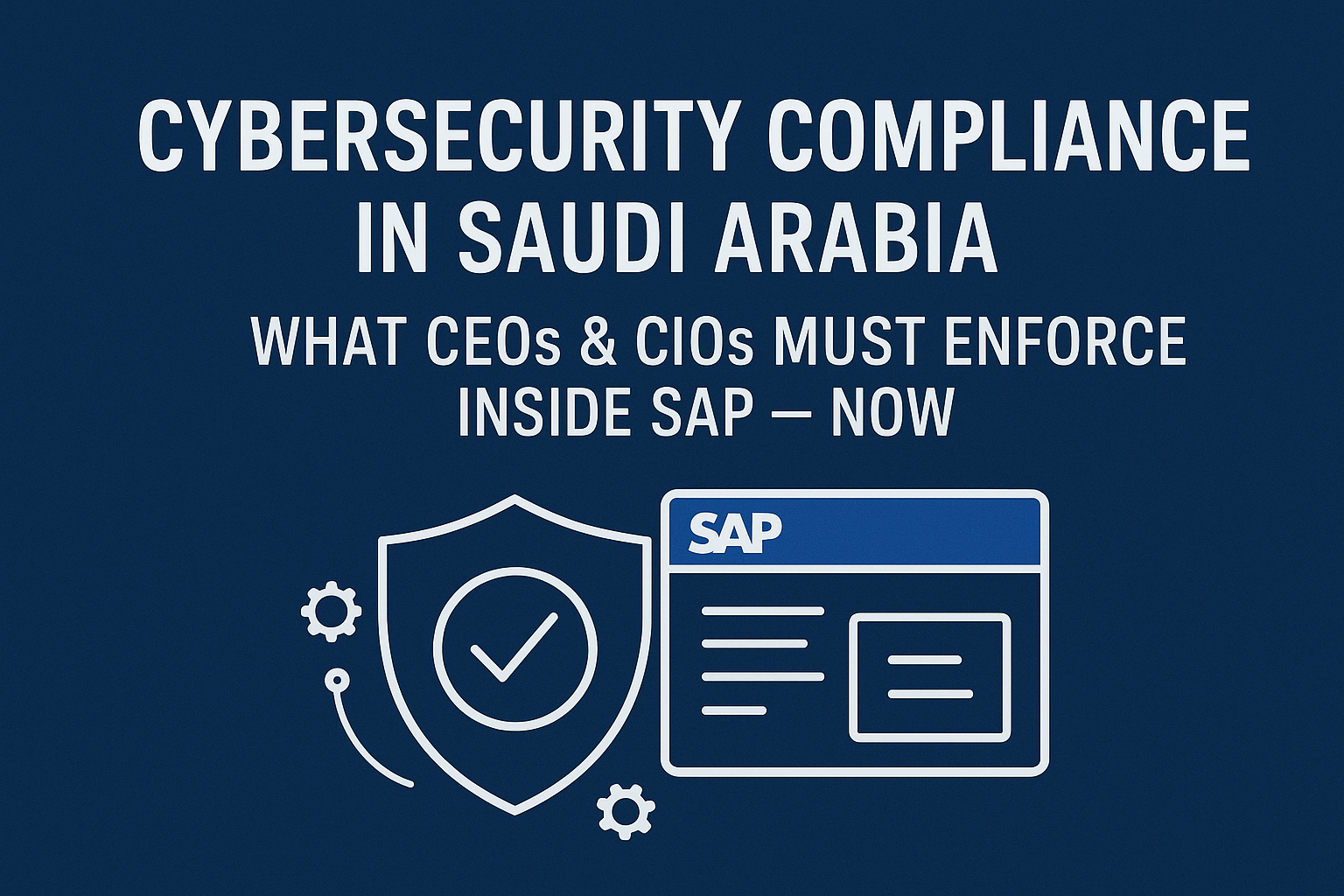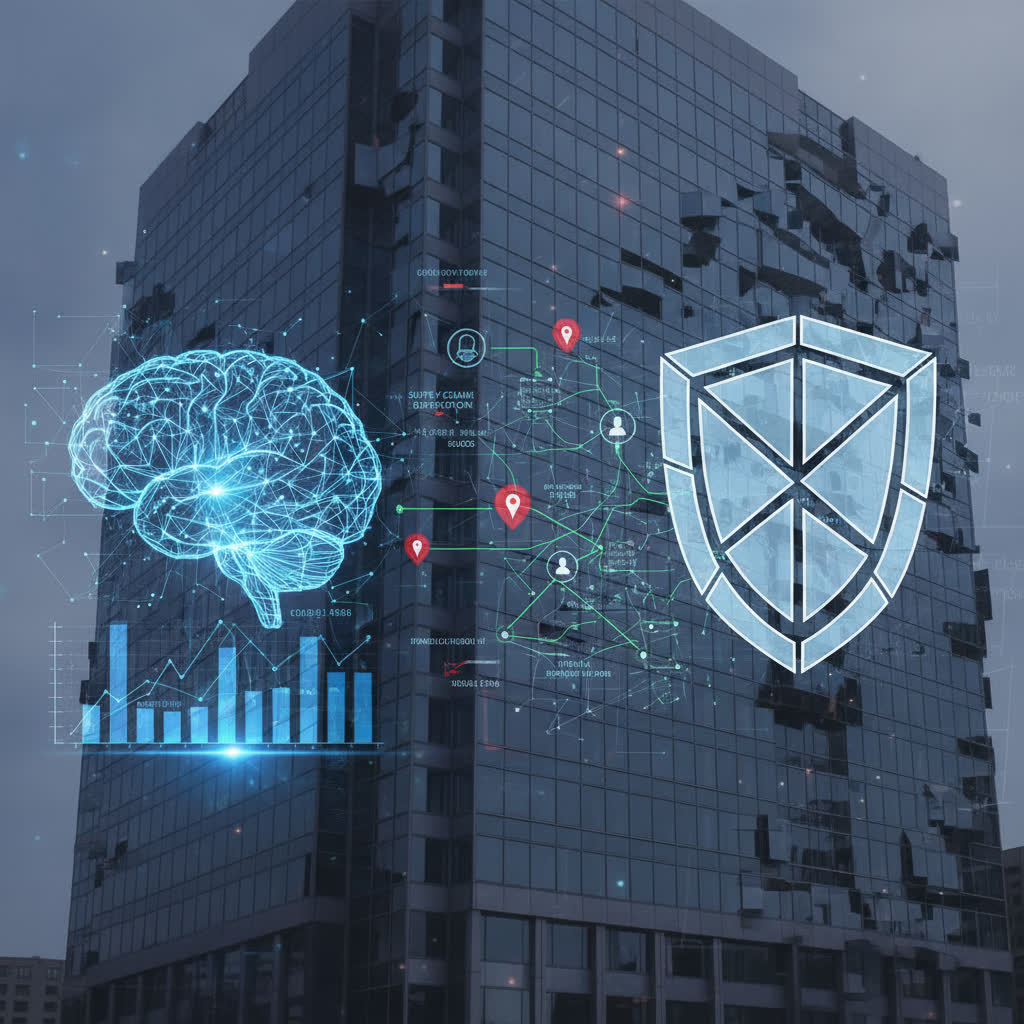Managing access and authorizations in enterprise-level environments continues to become more complex as systems grow and regulations multiply. Digital transformation has escalated the importance of secure and compliant authorization management frameworks. As businesses adopt advanced technologies and evolving regulatory landscapes reshape compliance obligations, organizations must remain aware of the latest industry trends in enterprise authorization management. Failure to do so can increase risk, drain resources and threaten business continuity.
Understanding Enterprise Authorization Management
Authorization management refers to the policies, processes and tools organizations deploy to determine who can access specific resources or perform certain tasks within enterprise systems. At its core, this function protects sensitive data and operations. As organizations implement software platforms like SAP or Oracle, which integrate vast arrays of information and processes, effective authorization management becomes essential. It ensures that only the right individuals have the appropriate level of access at the right time.
Strong authorization strategies go beyond user provision. They employ a combination of role-based access control (RBAC), context-aware checks and continuous reviews. This ensures permissions accurately reflect users’ job functions while minimizing unnecessary or risky access. Whether in finance, healthcare or manufacturing, authorization management forms the backbone of operational security and compliance efforts. When handled well, it supports productivity and reduces friction for end users.
Key Trends Shaping Authorization Management in 2025
Emphasis on Zero Trust Security Models
The shift to zero trust architectures is reshaping the way businesses approach authorization. No user or device gains implicit trust simply by being inside the network perimeter. Each authentication request gets evaluated in real-time based on multiple contextual signals. Zero trust pushes organizations to reassess authorization policies, scrutinize legacy permissions and invest in intelligent tooling that automates least-privilege principles. As perimeter defenses lose their effectiveness, granular and continuous authorization becomes the new standard for preventing breaches.
Automation and Machine Learning in Access Reviews
Manual authorization reviews are not only time-consuming but can also fail to detect subtle risks. Modern enterprises deploy machine learning algorithms to analyze usage patterns, flag anomalies and recommend permission changes. These technologies streamline periodic access reviews, automatically suggest privilege removals and help identify segregation of duty conflicts. As data volumes increase, automation helps maintain accurate authorization landscapes while reducing human error and administrative burden.
Regulatory Compliance Drives Evolution
Regulatory frameworks such as GDPR, SOX and ISO 27001 demand ongoing proof that authorization controls work as intended. The pace of regulation shows no sign of slowing, with new international data privacy and audit rules emerging each year. Enterprises must now track permissions with more detail, maintain meticulous logs and demonstrate compliance through repeatable processes. Authorization management solutions must offer transparent audit trails and rapid reporting capabilities to satisfy external and internal auditors alike.
Cloud and Hybrid Environments
Enterprise IT landscapes today often extend across on-premises servers, private clouds and various software-as-a-service platforms. Managing authorizations across such mixed environments is increasingly difficult. Each ecosystem might use different technical controls, role constructs or APIs. As organizations accelerate cloud adoption, they need unified views and management tools that span all systems. The ability to synchronize access policies reduces the chance of overlooked permissions that could become attack vectors or compliance liabilities.
The Growing Importance of Role Design and Maintenance
Optimizing Roles for Efficiency and Security
Role-based access control remains a cornerstone of authorization management. However, poorly designed or incorrectly maintained roles can quickly introduce risk. Common issues include excessive permission accumulation or poorly understood combinations that violate segregation of duties requirements. In 2025, organizations are investing more in role optimization exercises, using advanced analytics to identify redundant or mismatched roles. This not only reduces the attack surface but also makes it easier for IT and business users to manage day-to-day access requests.
Lifecycle Management of Permissions
Employees change roles, leave the company or take on additional responsibilities. Managing these changes in real-time is vital. Automated workflows that trigger role reviews or deprovisioning actions based on updates in human resource systems or organizational directories help keep permissions current. This reduces the chances of orphaned or excessive accounts being left behind, which can become significant security concerns over time. Tools that integrate HR events with authorization mechanisms help to maintain accurate access profiles across the organization.
Segregation of Duties: A Pillar for Trust and Security
Segregation of duties (SoD) is more than an internal audit requirement. It is a fundamental safeguard in authorization management. By ensuring that no single person can perform conflicting tasks, such as approving and paying invoices, SoD controls prevent errors and fraudulent behavior. Enterprises are leveraging rule libraries that encode common SoD risks for their particular industry. Integrating these checks into user provisioning workflows or periodic reviews makes enforcement reliable and transparent.
New toolsets now integrate SoD analysis into user onboarding and offboarding. This allows teams to ensure compliance from the first day of employment through every job change. These systems alert risk managers to policy violations and automate approvals, which minimizes bottlenecks and documentation errors. By embedding SoD controls into authorization management frameworks, organizations reduce the risk of accidental or intentional damaging behavior.
Authorization Management in S/4HANA Migrations
As teams move from traditional ERP platforms to modern digital cores such as S/4HANA, the need for effective authorization management increases. Migrating to S/4HANA involves rethinking how roles map to business processes, compliance mandates and technical access points. Companies must strike a balance between quickly enabling users and meticulously reassessing legacy permissions. Projects like these amplify the importance of clean-up, automation and simulation tools that predict how new settings will impact end user access and system performance.
S/4hana brings new authorization objects, more granular controls and greater transparency. Enterprises approach migration with detailed mapping exercises, stakeholder workshops and frequent testing. This reduces disruptions and supports compliant go-live transitions. They also prioritize training to ensure administrators and auditors learn new concepts and interfaces. Establishing robust authorization foundations during migration minimizes expensive and disruptive permission remediation efforts later on.
The Role of Automation in Migration
Automation continues to play an expanding role during ERP migrations. Automated tools help identify unused roles, analyze business processes and forecast the potential impact of proposed authorization changes. Some solutions leverage artificial intelligence to map existing permissions to equivalent S/4HANA objects. This helps organizations cut project timelines, prevent permission bloat and preserve compliance. Sustained post-migration monitoring further ensures that permissions do not drift over time or open new attack surfaces.
Meeting Audit and Compliance Demands
How Audit Needs Shape Authorization Practices
Auditors require clear evidence that access rights are assigned properly and that changes get logged and reviewed. For enterprises, this means embedding audit trails deep into authorization management processes. Modern best practices include tagging approval chains with context about the request, storing logs securely and applying analytics to surface suspicious changes. Audit-ready access revocation, periodic user attestation and regulatory reporting are integral parts of the authorization landscape in 2025.
Many auditors reference standards like ISA 315, which focus on how organizations identify and address risks in financial reporting environments. Effective authorization controls, role reviews and real-time monitoring significantly support the achievement of audit goals. By automating reporting and maintaining complete access change histories, companies streamline audit preparation and reduce business disruption during assessments.
Addressing Data Privacy and Security Requirements
Alignment with GDPR and Global Privacy Laws
New data privacy laws such as GDPR and similar legislation in other jurisdictions place strict requirements on who accesses personal and sensitive information. Authorization management must enforce consent, track usage and prevent unauthorized data exposure at every step. Enterprises implement policies that mirror geographic or departmental restrictions in access controls. Role definitions now take data subject rights into account and provide mechanisms for the rapid restriction or removal of access upon request.
Data minimization principles influence both how permissions get assigned and how systems store user logs. Authorization management solutions feature strong user consent tracking, granular logging and detailed reporting. This helps organizations answer subject access requests, conduct privacy impact assessments and satisfy regulatory reporting obligations. As privacy compliance continues to deepen, seamless alignment between authorization controls and privacy requirements remains essential not only for legal compliance but also for preserving stakeholder trust.
Integrating Authorization Management with Business Objectives
Today’s enterprise authorization management must align directly with wider business goals. Access controls support digital transformation efforts, process innovation and operational efficiency. By enabling controlled, auditable access to sensitive systems, robust authorization drives agility and confidence in adopting new technologies and platforms. When business leaders and IT teams collaborate on access governance, the result is often a more responsive and resilient organization capable of scaling securely.
Organizations now factor authorization management into M&A activity, divestitures and supply chain partnerships. Centralized policy engines and dashboards help leaders envision the impact of access changes during organizational shifts. Integration with HR, finance and procurement systems further strengthens compliance by tying business activity to technical controls. This bridges the gap between business and technology, reduces silos and provides data-driven insights to support strategy setting at the executive level.
The Future of User Experience in Authorization Management
Making Access Easy and Secure
The next wave of authorization management focuses on eliminating unnecessary complexity for end users while preserving security. Improved user interfaces, self-service permission requests and intelligent role suggestions reduce friction in daily operations. Context-aware authentication systems grant permissions based on factors such as device, location or time of day, simplifying legitimate access while stopping suspicious attempts. By embedding these experiences into employee workflows, organizations foster productivity and engagement.
Security teams leverage employee feedback and behavioral analytics to fine-tune authorization settings. When users encounter roadblocks, support is delivered quickly and with clear guidance. High-performing enterprises view authorization management not just as a technical shield but as part of the broader employee experience. Systems that balance transparency, simplicity and accountability reduce shadow IT, increase compliance and build a culture of trust.
Continuous Monitoring and Adaptive Controls
Responding to Changing Environments
Enterprises are recognizing that authorization scenarios shift constantly due to new hires, promotions, threats or regulatory updates. Modern solutions focus on real-time monitoring, adaptive policy adjustment and anomaly detection. These mechanisms quickly identify suspicious behavior, such as unusual account combinations or access outside normal business hours. Automation enables immediate mitigation steps like alerting administrators, enforcing step-up authentication or temporarily restricting access pending review.
Adaptive authorization controls can incorporate new threat intelligence feeds, legal requirements or business priorities without requiring weeks of manual intervention. This approach keeps permissions current and valid at all times. With scalable monitoring and alerting, organizations maintain high levels of control over complex IT infrastructures, even as user groups, business systems and regulations change rapidly. Such flexibility supports both security and responsiveness.
Preparing Organizations for Modern Authorization Challenges
As technology environments grow more complex, enterprise authorization management takes on greater significance in managing risk, supporting compliance and enabling innovation. Business leaders and IT professionals must remain agile and informed to respond to these evolving demands. Investment in automation, analytics and centralized policy frameworks lays the groundwork for robust access management. An informed approach prepares organizations to thrive in 2025, equipped with secure, efficient and compliant authorization practices suited to a fast-changing world.





